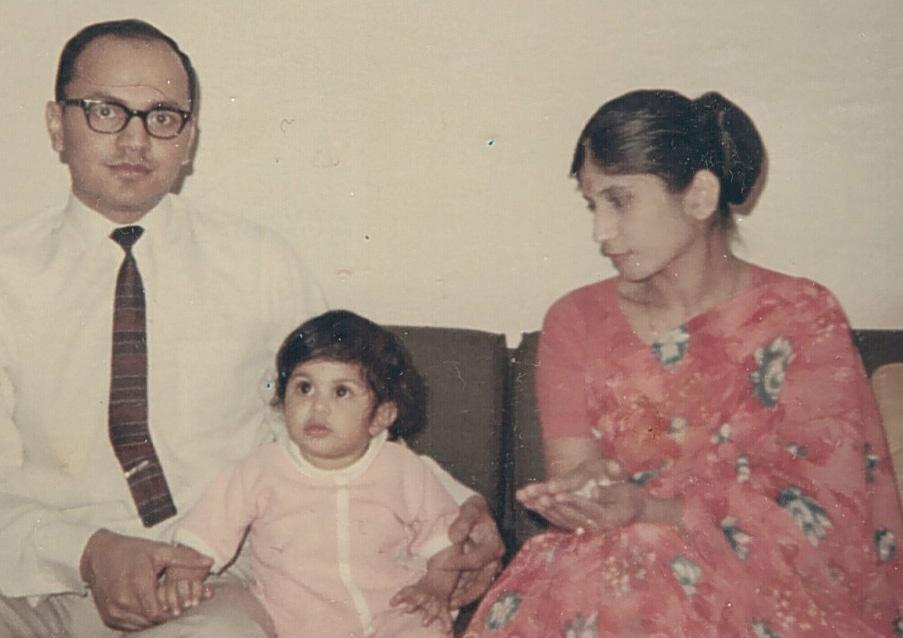
8 minute read
Maya Ajmera: A Sterling
from SEEMA December 2020 Issue
by SEEMA
A Sterling Advocate for Science
Maya Ajmera, president and CEO of the Society for Science, discusses social innovation, public education and STEM
JORDANA WEISS
Despite her varied career, Maya Ajmera’s life has been stitched together with one simple thread: social impact.
In her current role, she is the president and CEO of the Society for Science & the Public, an organization best known for founding America’s oldest and most highly regarded high school science competition, the Regeneron Science Talent Search, which was for many years best known by the sponsor, Westinghouse. She is also the publisher of the biweekly, award-winning Science News, a magazine she transformed from a staid, debt-laden institution to one with the financial freedom and journalistic ability to chase down the latest STEM stories and present them to the public.
We spoke with her only weeks after she was announced as the recipient of the National Science Board’s 2020 Public Service Award. Honored for her work in STEM ad-
: SHRAVYA KAG PHOTOGRAPH BY
vocacy and public service, she joins the ranks of other distinguished awardees like Ira Flatow, Alan Alda, Oliver Sacks, and Jane Goodall. However, when we asked about the
“THIS honor, she was quick to divert praise else-
AWARD IS where. “I felt elated and it NOT ABOUT felt very good for us as an organization to
ME; IT’S be recognized for the extraordinary work ABOUT MY the team has been doing,” she said. “This
TEAM” award is not about me; it’s about my team, the Society for Science & the Public, and the important work we do.” We wanted to get a sense of how she got to where she is today, what drew her to social entrepreneurship and STEM education, and how her unique combination of skills made her the perfect choice to take over the nearly 100-year-old Society for Science & the Public. To fully understand her remarkable career trajectory, let’s start at the beginning.

Maya, President & CEO of the Society for Science & the Public, pictured with her 7-year old daughter, Talia Growing Up in the South
Ajmera was born in Iowa City, Iowa, the daughter of Indian immigrants from the Indian states of Bihar and Rajasthan. Brought up in eastern North Carolina, she considers herself a Southerner at heart, but maintains a strong connection to her extended Jain family in India, spending most summers there as a child.
“I remember in elementary school, my mother would pull me out in April,” she said. “They would let the teachers know in January, so I would get all this homework and stuff I had to do in order to move into the next grade. My summer holidays went from mid-April to August, and
my mother would take me and my brother to India. We’d spend time with my nani and nana [maternal grandmother and grandfather], my aunts and uncles, and loads of cousins in Gaya, Bihar. Those were the happiest times of my life, actually.”
Another fond early memory involves Ajmera and her dad going to Sheppard Memorial Library, once the family settled in Greenville, North Carolina.
“We had this ritual,” she said. “My father would leave me at the children’s library downstairs and go up to the reading room. Afterward, I would check out my large stack of books with my precious library card, and we would go to Hardee’s to eat, and he would ask me about what I read that morning. I would talk about Phillis Wheatley, and he’d tell me about Rabindranath Tagore.” It was this exchange of ideas that sparked an early love of learning.
During her senior year in high school at the North Carolina School of Science and Mathematics, Ajmera worked in a laboratory at Duke University, eventually entering a project titled “Isolation and Characterization of a Tetracycline-Resistant Plasmid of an Animal Isolate,

Baby Maya pictured with her mother and father, who immigrated to the United States from the Indian states of Bihar and Rajasthan

Streptococcus faecalis, SF2” in the Westinghouse Science Talent Search. Ajmera was a member of the Honors Group —the top 300 competitors. Later, under Ajmera’s leadership, that competition would celebrate its 78th year.
The Moment of Obligation
Ajmera received an undergraduate degree in neuroscience from Bryn Mawr College, a leading women’s liberal arts college in Bryn Mawr, Pennsylvania, and was awarded a Rotary Graduate Fellowship to study in South and Southeast Asia in 1990. During her travels, she found herself on a train platform in Bhubaneswar, an ancient city in India’s eastern state of Odisha, when she was hit with something that she calls her “moment of obligation.”
As she stepped into the station, she noticed a small makeshift school that had been set up to serve the children who lived and worked around the train platform. When she asked the teacher how much it cost to operate, she was shocked to learn that the school could pay two teachers to instruct 50 children for only $500 per year.
Initially, she thought: “How do I help? And, how come I don’t see more train platform schools everywhere?” To her parents’ horror, Ajmera put off her planned MD/ Ph.D. and went to Duke for a graduate degree in public policy. This gave her the confidence to ask pertinent questions like “How do I get small amounts of capital into the hands of really innovative grassroots organizations?”
With these questions in mind, she founded the Global Fund for Children (GFC), with the goal of supporting community-based organi-
Maya on stage with students from around that world at the International Science and Engineering Fair opening ceremony

zations serving the most vulnerable young people around the world. To date, GFC has awarded nearly $50 million to over 700 innovative grassroots organizations in over 80 countries, touching the lives of over 11 million children worldwide.
Along with founding GFC, Ajmera is also an award-winning children’s book author, including titles like Every Breath We Take, Children from Australia to Zimbabwe, and To Be a Kid. Millions of children globally read her books and learn about the similarities that tie them together. Her writing, much like GFC’s mission, conveys the important message that no matter where a child is born and raised, they share the same hopes and dreams.
Despite her success at GFC, Ajmera felt that founders should step away after a period of time. She also wanted to balance her personal and professional life. After 18 years at GFC, Ajmera took a sabbatical and became a visiting scholar and “IN 2015, WE PILOTED A PROGRAM CALLED ‘SCIENCE NEWS IN HIGH SCHOOLS.’ AFTER FIVE YEARS, WE’RE NOW IN OVER 5,000 HIGH SCHOOLS ACROSS THE COUNTRY.”
professor at The Sanford School of Public Policy at Duke University and The Paul H. Nitze School of Advanced International Studies at Johns Hopkins. She also welcomed a daughter with her husband David H. Hollander, Jr.
The Society for Science & the Public
In 2014, Ajmera discovered that an executive search firm had been tasked with identifying a new CEO for the Society for Science & the Public, one of the nation’s most respected science institutions. Despite being an alumna of the organization’s Westinghouse Science Talent Search, Ajmera confesses “I didn’t think I had a chance in the world.” After a lengthy interview process, she was offered the job and was on board in August 2014.
During her six years at the helm, Ajmera has shaken up this 99-yearold organization, enacting huge changes that transformed the society’s journalistic crown jewel, Science News, from a consumer magazine drowning in debt to one that is not only sustainable but increasing its readership by leaps and bounds.
“What we realized is that science teachers needed excellent, evidence-based content for teaching,” she explains. “They didn’t know which sources to trust, and their textbooks are really old. In 2015, we
piloted a program called ‘Science News in High Schools.’ After five years, we’re now in over 5,000 high schools across the country.”
That isn’t the only forward-thinking, positive change Ajmera and her team have made in the last few years. Instead of going on a lengthy hunt for investors once Intel’s term as the sponsor for the Science Talent Search expired, the society put out a call for proposals. After all, what company wouldn’t want to lend their name to a competition that’s turned out (so far!) 13 Nobel Prize winners?
After receiving more than 50 proposals, Regeneron was selected as the winner. The company, which was founded by fellow Westinghouse Science Talent Search alums, went on to invest more than $100 million in the society’s suite of science education programs.
Looking Forward
The rise of COVID-19 in the United States has shown us just how easy it is for misinformation and distrust of science to fester and grow, especially when it is encouraged at the highest levels of the U.S. government. The society has actively worked to combat this by making their robust COVID-19 coverage entirely free and open for republishing by smaller, community news outlets.
“What we look towards is making sure the next generation of young people in this country are STEM ambassadors. Everything from our outreach and equity programs to Science News, they are the ones that we have to reach,” Ajmera said.
Ajmera’s incredible drive to bridge her two loves of community-focused activism and science advocacy gives us hope that with increased access to STEM education and resources, the future of the next generation looks bright. d For objective coverage of COVID-19 from the nation’s only newsroom that is broken down by sub-fields of science, check out the Science News.




Maya is an award-winning children’s book author of more than 20 titles with more than 5 million readers worldwide










